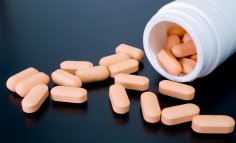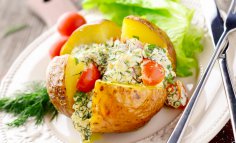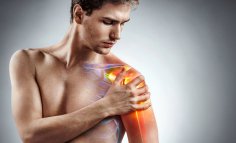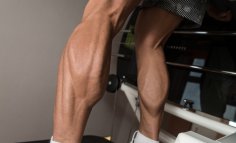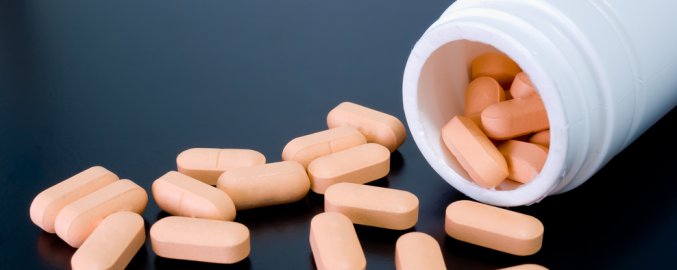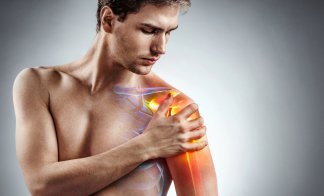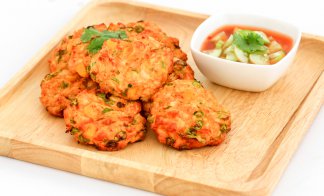Green Tea as an Herbal Supplement in Athletics & Bodybuilding
Powdered green tea (powdered leaves of Camellia sinensis, Theaceae) has a number of proven health benefits. In traditional medicine it's considered to be anti-inflammatory, antioxidative, antimutagenic, and anticarcinogenic and can prevent cardiac disorders. Epidemiologically, it has been suggested that green tea consumption prevents type 2 diabetes
Since the focus of interest among bodybuilders probably lies in its effectiveness as a weight loss agent, we'll look at that first. Green tea seems to both prevent fat accumulation and promote fat burning. It is believed to accomplish the former by inhibiting the enzyme fatty acid synthase (1). Fatty acid synthase is actually a family of enzymes that are responsible for elongating fatty acid chains from smaller components. Much of this research was carried out in animals, however, where so called de novo lipogenesis, the formation of fat from non fat sources, is an important metabolic pathway. In humans, de novo lipogenesis is not considered a major pathway for the maintenance of adiposity. When animals eat a mixed diet, a portion of all the constituents is stored and a portion is used for fuel. Ingested carbohydrates can be easily converted to fat for storage. In humans on the other hand, when a mixed diet is consumed, the fat is stored and the carbohydrates are used for fuel, allowing more fat storage and less fat utilization as fuel. One must use caution when extrapolating animal studies to humans. So many of the claims that the fat inhibiting properties of Green Tea lie in its ability to block fat formation are somewhat misleading. This may be a major factor in animals, but this antilipogenic action of green tea only operates to a minor extent in humans. Nevertheless, it does make a small contribution to the weight loss seen when humans ingest green tea.
What factors are then responsible for the anti-fat nature of green tea? If inhibition of lipogenesis in humans is really not contributing much, it's logical to see if green tea increases lipolysis, the breakdown of fats for use as fuel. One study done in rats suggests that vitamin C in the green tea may contribute to lipolysis (2). Caffeine burns fat by increasing thermogenesis, and green tea contains caffeine, so caffeine may be contributing to the fat burning properties of green tea. But green tea contains additional compounds called catechins that contribute to the thermogenic effect of green tea.
The current model that describes how green tea raises metabolic rate, resulting in increased lipolysis, goes like this:
Norepinehrine and epinephrine, two the body's naturally occurring neurotransmitters and hormones, bind to receptors on the surface of fat cells, stimulating the activity of an enzyme, Hormone Sensitive Lipase, (HSL) mobilizes fatty acids so they can leave the adipocyte and travel to other parts of the body to be used as fuel. Recall from our discussion of forskolin that part of this signaling cascade involves activating cyclic AMP, or cAMP. The caffeine in green tea acts as a so-called phosphodiesterase inhibitor, prolonging the action of cAMP and amplifying the action of HSL. It also turns out that the norepinephrine and epinephrine that began the signaling process are broken down by an enzyme called catechol O-methyltransferase (COMT) . Now comes the beautiful part: the catechins in green tea inhibit COMT, prolonging the life of the norepinephrine and epinephrine. So green tea has a much greater lipolytic effect that does caffeine alone (3).
In animal studies green tea also seems to act as an appetite suppressant (4). The catechin believed responsible for the weight loss seen in animals is EGCG, depicted above. Exactly how green tea reduces appetite is unknown, but it is evidently not due solely to the caffeine content since direct administration of EGCG results in appetite suppression. It's also possible that elevated levels of norepinephrine, described above, contribute to appetite suppression. Green Tea also elevates levels of dopamine in the brain (5).
Green tea also inhibits the enzymes that are responsible for the digestion of fats (6), so called lipases. The processes outlined above describe lipolysis, the liberation of fatty acids stored in adipocytes. However, unless energy expenditure (EE) is increased, or a diet undertaken, the fatty acids will simply be converted back to fat. It turns out that both caffeine, either alone or in green tea increases EE by inducing so-called futile cycling in adipocytes. Futile cycling involves the continual breakdown of fats into fatty acids and glycerol, with the subsequent reesterification of these components. This is an energy consuming process that elevates EE.
GREEN TEA AND CANCER
Thus far we have focused almost exclusively on how green tea can be used to favorably improve body composition. The plant extract has a diverse range of additional healthful and medicinal properties that we will discuss briefly. Green tea has been used for centuries if not millennia to treat certain cancers. Modern studies support this traditional use of the plant. For example, one Chinese study showed that green tea drinkers developed lung cancer 35% less often than non-drinkers (7). Besides preventing lung cancer, green tea has shown its ability to treat and prevent skin, liver, stomach, mammary gland and colon cancer. Epigallocatechin gallate [(-)-EGCG] appears to be the active ingredient, inducing apoptosis (programmed cell death) and cell cycle arrest in cancerous tissue, but not normal tissue (8).
GREEN TEA AND GLUCOSE INTOLERANCE/TYPE II DIABETES
Another active area of research involves the use of green tea to treat type II diabetes (9). The hallmark of type II diabetes is elevated blood sugar. (Many bodybuilders and athletes use ALA or R-ALA to lower blood sugar). In the study referenced in (9), Tsuneki et.al. administered a solution containing 1.5 grams of green tea to a group of normal, healthy subjects during an oral glucose tolerance test. Blood was sampled and glucose levels monitored at 30, 60, and 120 after drinking the tea. The results are shown below, compared to placebo As can be seen in figure 2 below, green tea resulted in a statistically significant lowering of blood sugar compared to placebo.
Although the exact mechanism by which green tea exerts its glucose lowering effect is not known, Tsuneki et.al believe it is due to an insulin sensitizing effect in peripheral tissue, primarily skeletal muscle, the body's largest sink of glucose. This reasoning is consistent with research showing increased expression of the GLUT4 glucose transporter in rats fed green tea (10). GLUT4 is transporter that shuttles glucose into cells.
While most lean people are not glucose intolerant, there are a number of agents used by athletes that
Can lead to hyperglycemia, including thyroid hormone, growth hormone, and potentially high doses of anabolic steroids. Chronic hyperglycemia leads to a number of health problems which might possibly be prevented by green tea consumption.
Green tea has also been shown not only to lower blood sugar in normal subjects and type II diabetics, it has also shown promise in the treatment of on e of the most serious complications of type II diabetes, diabetic retinopathy (11).
Figure 2. Blood glucose in normal volunteers after green tea consumption during glucose tolerance test
GREEN TEA AND HYPERTENSION
Anabolic steroid use is also commonly associated with high blood pressure, or hypertension. As you might guess from the theme of this paper, green tea consumption, in the words of one research group,
"significantly reduces the risk of developing hypertension in the Chinese population." (12)
One way hypertension is bel1eved to develop is by the action of a natural compound in the body, angiotensin, on the walls of blood vessels, leading to vessel wall hypertrophy and a narrowing of the vessel wall. One of the active ingredients described above, epigallocatechin 3-O-gallate (EGCG), has the ability to prevent the angiotensin induced vessel wall hypertrophy and narrowing (13).
GREEN TEA AND LIVER DISEASE
Due to its potent antioxidant and anti-inflammatory properties Green Tea has shown promise in the treatment of a number of liver diseases where inflammation and oxidant damage play a role (14).
1) Tian WX, Li LC, Wu XD, Chen CC. Weight reduction by Chinese medicinal herbs may be related to inhibition of fatty acid synthase. Life Sci. 2004 Mar 26;74(19):2389-99
2) Hasegawa N, Niimi N, Odani F. Vitamin C is one of the lipolytic substances in green tea. Phytother Res 2002 Mar;16 Suppl 1:S91-2.
3) Dulloo AG, Duret C, Rohrer D, Girardier L, Mensi N, Fathi M, Chantre P, Vandermander J Efficacy of a green tea extract rich in catechin polyphenols and caffeine in increasing 24-h energy expenditure and fat oxidation in humans. Am J Clin Nutr 1999 Dec;70(6):1040-5.
4) Kao YH, Hiipakka RA, Liao S. Modulation of endocrine systems and food intake by green tea epigallocatechin gallate. Endocrinology. 2000 Mar;141(3):980-7.
5) Yokogoshi H, Kobayashi M, Mochizuki M, Terashima T. Effect of theanine, r-glutamylethylamide, on brain monoamines and striatal dopamine release in conscious rats. Neurochem Res. 1998 May;23(5):667-73
6) Chantre P, Lairon D. Recent findings of green tea extract AR25 (Exolise) and its activity for the treatment of obesity. Phytomedicine 2002 Jan;9(1):3-
7) Zhong L, Goldberg MS, Gao YT, Hanley JA, Parent ME, Jin F. A population-based case-control study of lung cancer and green tea consumption among women living in Shanghai, China Epidemiology 2001 Nov;12(6):695-700
8) Chen D, Daniel KG, Kuhn DJ, Kazi A, Bhuiyan M, Li L, Wang Z, Wan SB, Lam WH, Chan TH, Dou QP. Green tea and tea polyphenols in cancer prevention. Front Biosci . 2004 Sep 1;9:2618-31
9) Tsuneki H, Ishizuka M, Terasawa M, Wu JB, Sasaoka T, Kimura I. Effect of green tea on blood glucose levels and serum proteomic patterns in diabetic (db/db) mice and on glucose metabolism in healthy humans. BMC Pharmacol 2004 Aug 26;4(1):18
10) Wu LY, Juan CC, Hwang LS, Hsu YP, Ho PH, Ho LT. Green tea supplementation ameliorates insulin resistance and increases glucose transporter IV content in a fructose-fed rat model. Eur J Nutr 2004 Apr;43(2):116-24
11) Skopinski P, Szaflik J, Duda-Krol B, Nartowska J, Sommer E, Chorostowska-Wynimko J, Demkow U, Skopinska-Rozewska E. Suppression of angiogenic activity of sera from diabetic patients with non-proliferative retinopathy by compounds of herbal origin and sulindac sulfone. Int J Mol Med 2004 Oct;14(1):707-711
12) Yang YC, Lu FH, Wu JS, Wu CH, Chang CJ. The protective effect of habitual tea consumption on hypertension Arch Intern Med 2004 Jul 26;164(14):1534-40
13) Zheng Y, Song HJ, Kim CH, Kim HS, Kim EG, Sachinidis A, Ahn HY. Inhibitory effect of.
epigallocatechin 3-O-gallate on vascular smooth muscle cell hypertrophy induced by angiotensin II. J Cardiovasc Pharmacol 2004 Feb;43(2):200-8
14) Chen JH, Tipoe GL, Liong EC, So HS, Leung KM, Tom WM, Fung PC, Nanji AA. Green tea polyphenols prevent toxin-induced hepatotoxicity in mice by down-regulating inducible nitric oxide-derived prooxidants. Am J Clin Nutr 2004 Sep;80(3):742-51.

